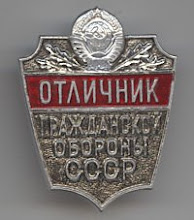I've been growing increasingly dismayed in recent months by the decreasing quality of ScienceBlogs. More and more it seems that Sb is less about science than partisan bloviating. Now, it's true that PZ Meyers devotes most of his blog to criticizing organized religion--but he's a very talented science popularizer when he wants to be. But many of the more recent additions to ScienceBlogs have very little to do with any kind of "science."
Take, for instance,
Casaubon's Book. This recent addition to Sb is written by Sharon Astyk, who is pretty well-known in the Oil Drum/Energy Bulletin resource pessimist mileau, as well as among boutique farming enthusiasts. Astyk is absolutely convinced that technological solutions to problems like climate change are simply unfeasible, and constantly churns out posts about
how we will soon run out of energy to run farm machinery and tens of millions of people will have to become agricultural laborers, how
genetic modification is supposedly useless to address the world's agricultural challenges, or endorsing the
latest Peak Oil screed on The Oil Drum. The thing is, most of this has very little to do with science and everything to do with reinforcing Astyk's pessimistic attitude towards technological civilization. Furthermore, she has attracted a sizable number of like-minded commenters who attempt to shout down those who point this out.
What I find so infuriating about Astyk is her faux reasonableness, which serves to obscure what is in fact an anti-scientific mentality. A good example of this is her post "
Should You Drink Raw Milk?" In this post, Astyk acknowledges the various public health concerns that resulted in the ban on raw milk sales in the US but concludes that:
If you want raw milk, I would purchase it only after understanding the full risk-benefit analysis. I do not recommend it for pregnant women or children under 2, although I know plenty of people do drink it in those circumstances. I would either get your own dairy animal or purchase milk *only* from people who you actually develop a relationship with, after seeing their barn and handling techniques, and knowing what testing they do. I would make sure that I *always* do my milk pickup with a cooler on hand and keep it cool all the time. I would drink my milk quickly, or process it to make cheese and yogurt.
I would love to see raw milk be more available to those who do make informed choices and who want it, and I'd love to see small dairy producers able to sell it. But to do so requires a level of involvement and consciousness about your food that is simply different than picking up a quart of milk at the grocery store.
So Astyk's answer to the question "should you drink raw milk?" is somewhere between "sure, if you want to" and "maybe." The problem here is that this is NOT a justifiable conclusion based on the substantial body of scientific literature on raw milk consumption. The
scientific answer to the question is "
NO."
For instance, see S.P. Oliver et al.,
"Food Safety Hazards Associated with Consumption of Raw Milk," published in the September 2009 issue of the journal
Foodborne Pathogens and Disease. According to the abstract:
"An increasing number of people are consuming raw unpasteurized milk. Enhanced nutritional qualities, taste, and health benefits have all been advocated as reasons for increased interest in raw milk consumption. However, science-based data to substantiate these claims are limited. People continue to consume raw milk even though numerous epidemiological studies have shown clearly that raw milk can be contaminated by a variety of pathogens, some of which are associated with human illness and disease. Several documented milkborne disease outbreaks occurred from 2000–2008 and were traced back to consumption of raw unpasteurized milk. Numerous people were found to have infections, some were hospitalized, and a few died."
The article reviews CDC records for the last decade regarding outbreaks of illness related to raw milk consumption for the last decade, while cautioning that these are clearly incomplete due to reporting problems. The authors conclude that
"Enhanced nutritional qualities, taste, and health benefits have all been advocated as reasons for raw milk consumption. However, science-based data to substantiate these claims are lacking or do not exist. On the other hand, the evidence for the risks associated with raw milk consumption is clear."There a substantial body of literature supporting the same basic conclusion, going back decades. Some pertinent examples:
Lejeune JT and Rajala-Schultz PJ. Unpasteurized milk: a continued public health threat. Clin Infect Dis 2009;48:93-100
Headrick ML, Korangy S, Bean NH, et al. The epidemiology of raw milk-associated foodborne disease outbreaks reported in the United States, 1973 through 1992. Am J Public Health 1998;88:1219-1221.
Chin J. Raw milk: a continuing vehicle for the transmission of infectious disease agents in the United States. J Infect Dis 1982; 146:440-441.
...and so on. Research on this dates back well into the 19th century.
So what Astyk is ACTUALLY doing, rather than offering a reasonable science-based assessment of the risks and benefits of raw milk consumption, is undermining scientific medicine. It is in fact eerily similar to
one of the rhetorical gambits used by the anti-vaccine movement: "shouldn't parents be allowed to weigh the risks and benefits and choose for themselves?" It sounds appealing, but from a scientific standpoint it's indefensible, and it ends up killing innocent children for no good reason.
Perhaps it's unreasonable of me to expect this, but I think something called "ScienceBlogs" should be firmly based in actual science, not in Peak Oil resource millenialism or a faux-progressive pastoral romanticism. To avoid confusion, I suggest that Seed magazine (the sponsor of Sb) change the name to "W00Blogs," and potentially consider inviting advocates of other anti-scientific and non-scientific outlooks to blog there. Is Deepak Chopra available?








